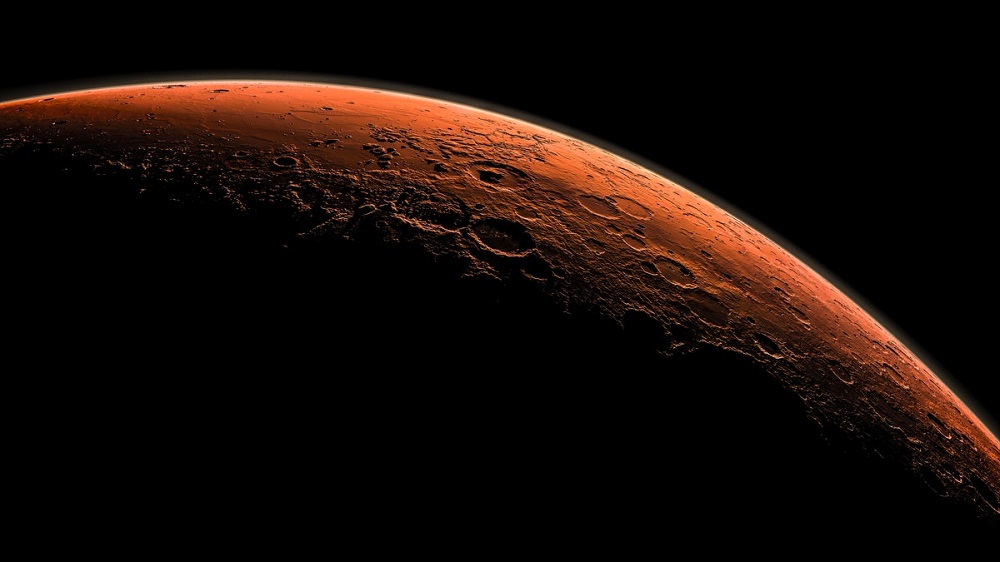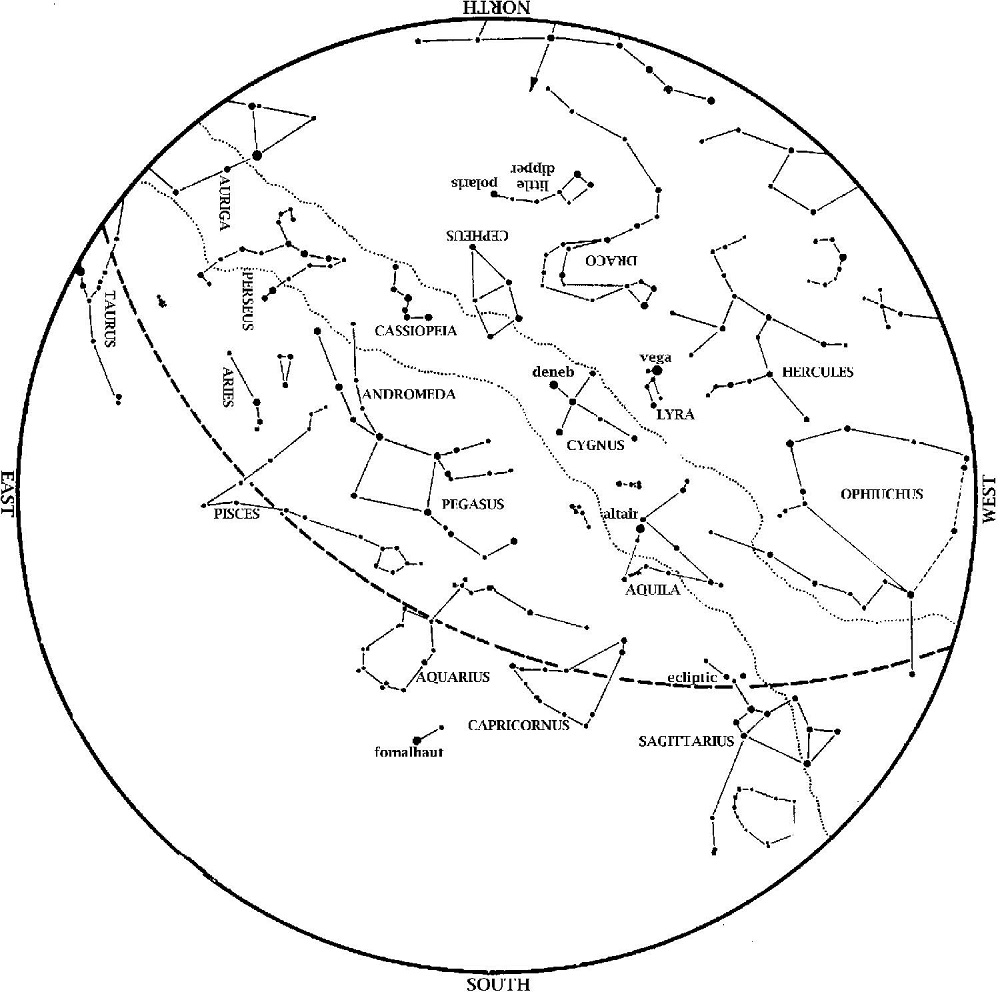Jupiter and Saturn are in the south at dusk this month. Look south in the early evening for the two planets which will be about 6 degrees apart. Beginning now, you’ll notice Jupiter slowly approaching Saturn. (Saturn is moving too, but even more slowly than Jupiter). By December 21, the two planets will be only six arcminutes (one tenth of one degree) apart in the sky. Jupiter outshines every star up at night.
Mars is up all night long this month. Tonight (10/1) it rises in the east as twilight ends. By mid-month, though, Mars will be well placed for observing right as night falls. And it will still be up in the west at dawn. This is because on October 13, Earth overtakes Mars on its inner, faster orbit. The resulting alignment is called ‘opposition’ because it puts Mars and the Sun on opposite sides of the Earth. Earth is also unusually close to Mars when those two planets are aligned; this is what makes Mars so bright now. Mars now outshines Jupiter, as well as all the stars visible at night. It won’t be this big and bright again until 2035!
Venus is now visible in the east at dawn. It remains a ‘morning star’ for the rest of 2020.

Autumn represents sort of an ‘intermission’ in the sky, with bright summer stars setting at dusk, while bright winter patterns such as Orion have not yet risen. The ‘teapot’ of Sagittarius sets in the southwest early in the evening. The Summer Triangle is high in the west. Meanwhile, the Great Square of Pegasus is in the east, indicating that autumn has begun. The stars rising in the east are much dimmer than those overhead and in the southwest because when you face east at dusk in October, you face out of the Milky Way plane. The center of our Galaxy lies between Scorpius and Sagittarius, while the Summer Triangle is also in the galactic plane. Pegasus, on the other hand, is outside the plane of our galaxy and is a good place to look for other galaxies. Nearby constellations Andromeda and Triangulum (a small triangle) contain the spiral galaxies nearest to our own.
Moon Phases in October 2020:
Full Oct. 1, 4:05 p.m.; Oct. 31, 9:49 a.m.
Last Quarter Oct. 9, 7:39 p.m.
New Oct. 16, 2:31 p.m.
1st Quarter Oct. 23, 8:23 a.m.
The Full Moon on Halloween morning is the second Full Moon of the month. This has come to be known as the ‘Blue Moon’.

Sunday, November 1, 2020, is the first Sunday of next month, which means that Daylight Saving Time ends at 2:00 am that morning. On 11/1, the time goes from 1:59 back to 1:00, such that the 1:00 am hour happens twice. Don’t forget to set your clocks back one hour on Halloween night!

The Summer Triangle is high in the west. The ‘teapot’ of Sagittarius sets in the southwest. Saturn and Jupiter are in the southwest at dusk, with the brighter Jupiter to the right of Saturn. The Great Square of Pegasus is high in the east at dusk. To the south and east, we see a vast dim area of sky known as the ‘Celestial Sea’, where only Fomalhaut stands out.
Our George Observatory remains closed. We are preparing ways to operate safely in light of COVID-19, and hope to open soon!
Clear Skies!

